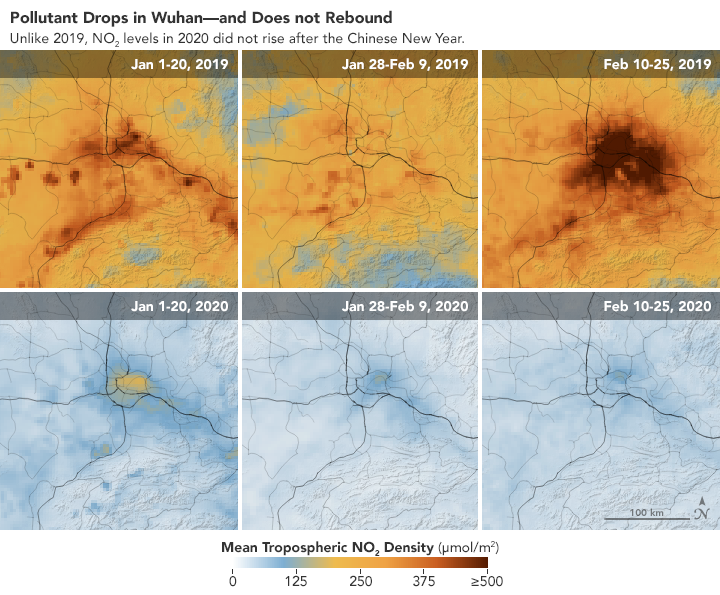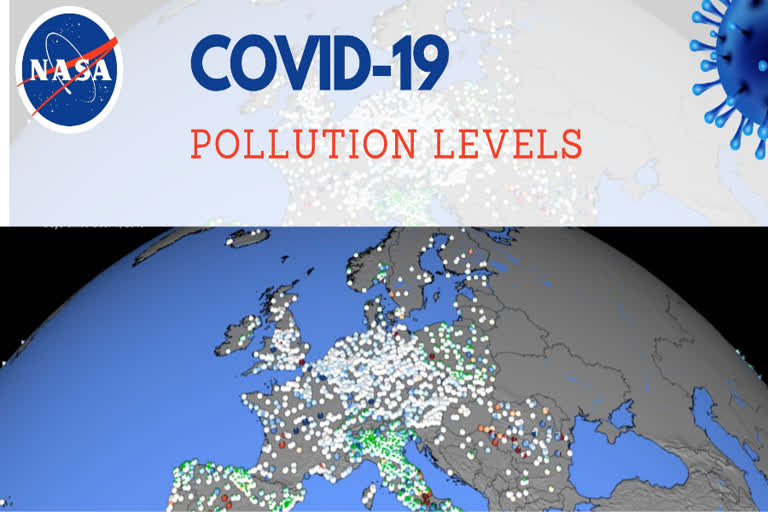Washington: Using computer models to generate a COVID-free 2020 for comparison, NASA researchers found that since February, pandemic restrictions have reduced global nitrogen dioxide concentrations by nearly 20%.
Nitrogen dioxide is an air pollutant that is primarily produced by the combustion of fossil fuels used by industry and transportation—both of which were significantly reduced during the height of the pandemic to prevent the novel coronavirus from spreading.
“We all knew the lockdowns were going to have an impact on air quality,” said lead author Christoph Keller with Universities Space Research Association (USRA) at NASA’s Goddard Space Flight Center in Greenbelt, Maryland.
He says, “it was also soon clear that it was going to be difficult to quantify how much of that change is related to the lockdown measures, versus general seasonality or variability in pollution.”
NASA model projections account for these natural variations leading to weather and atmospheric circulation change the make-up and chemistry of Earth’s atmosphere, scientists can use them to parse how much of the 2020 atmospheric composition change was caused by the COVID-19 containment measures.
The model simulation and machine learning analysis took place at the NASA Center for Climate Simulation. Its “business as usual” scenario showed an alternate reality version of 2020—one that did not experience any unexpected changes in human behavior brought on by the pandemic.
- From there it is simple subtraction. The difference between the model simulated values and the measured ground observations represents the change in emissions due to the pandemic response.
- The researchers received data from 46 countries—a total of 5,756 observation sites on the ground—relaying hourly atmospheric composition measurements in near-real time. On a city-level, 50 of the 61 analyzed cities show nitrogen dioxide reductions between 20-50%.
“In some ways I was surprised by how much it dropped,” said Keller. “Many countries have already done a very good job in lowering their nitrogen dioxide concentrations over the last decades due to clean air regulations, but what our results clearly show is that there is still a significant human behavior-driven contribution.”

“You could, at times, even see the decrease in nitrogen dioxide before the official policies went into place,” said co-author Emma Knowland with USRA at Goddard’s GMAO. “People were probably reducing their transit because the talk of the COVID-19 threat was already happening before we were actually told to shut down.” Once restrictions were eased, the decreases in nitrogen dioxide lessened, but remained below expected “business as usual” values.
Keller compared his estimates of the nitrogen dioxide decreases to reported economic numbers, namely, the gross domestic products, of the nations included in the study. According to Keller, they lined up shockingly well. “We would expect them to be somewhat related because nitrogen dioxide is so closely linked to economic activities, like people who travel and factories running,” he said. “It looks like our data captures this very well.”



